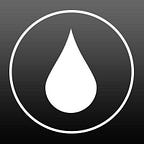Is Your Deaerator Performing Properly?
In my many years of experience, I have learned that water treatment is more than 90% mechanical and less than 10% chemical. Take deaerators (DAs) for example. They are a very efficient way of mechanically removing oxygen and other dissolved gasses from boiler feedwater. DAs are designed to take water that has about 7000 ppb oxygen and reduce that level to less than 20 ppb. That is a 99.7% reduction — done mechanically! The remaining oxygen is then removed through treatment chemicals. (Hence why they are called “oxygen scavengers”!)
DAs contain mechanical parts that can be affected during service, which in turn reduces their efficiencies and results in additional chemicals being needed to meet feedwater quality requirements.
I was the chemical person for the start-up of a renovated trash-to-steam plant. We were using about 50% more oxygen scavenger than should have been necessary. Since this was a contract account, the suspected poor performance was coming out of our pocket. So how could I prove the DA was not performing to spec (<20 ppb O2)?
One way to check the performance of a DA is to compare the heater section temperature to the expected water temperature at the DA operating pressure (20 psig). (Reference steam table below.) We checked the heater (dome) temperature, and it was fine (227oF). Next, we compared the storage section temperature to the heater section. The storage section temperature should have been within 5°F of the heater section, but instead it was at least 10 degrees lower (215oF). Not good!
Was that enough to cause the problem? To confirm our suspicion, we attached an online oxygen analyzer to the feedwater sample and began collecting baseline data. (Note: Oxygen ampules work perfectly fine as well.) With the oxygen scavenger chemical fed, the oxygen levels were below 3 ppb. Next step was to turn off the oxygen scavenger feed and see how the DA was mechanically operating. Since the DA has a volume of water in the storage tank, a wait time was needed to allow the “treated water” in the storage tank to be replaced with untreated water. This took about two hours. After this period of no chemical feed, the online oxygen analyzer started to peak at 100 ppb. That is far from the specified level of <20 ppb. Obviously, something was wrong with the DA. We needed to find the root cause.
This particular DA had spray nozzles inside the heater that were responsible for breaking up the feedwater into small droplets so the oxygen could be scrubbed from the water efficiently. During the next outage, a mechanic inspected the spray nozzles and found a small pellet of iron the size of a green pea stuck in one of the nozzles. Could this small pellet be the cause of the problem?
When we returned the boilers and DA to service and reached steady state, we were happily surprised to see the oxygen analyzer reading well below 20 ppb! After returning the oxygen scavenger chemical to service, we found the usage rate decreased to expected levels while the oxygen analyzer confirmed success.
As a nice value-added project for your customers, DA performance studies should be done at least annually. This is just another way of showing them you are a business partner rather than a vendor. Studies should also be conducted on feedwater heaters, softeners, and ROs. For contract accounts, your company may see a payback in higher profitability through reduced chemical feed rates!
